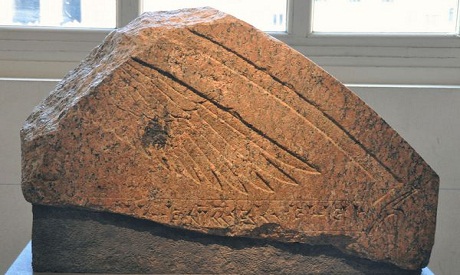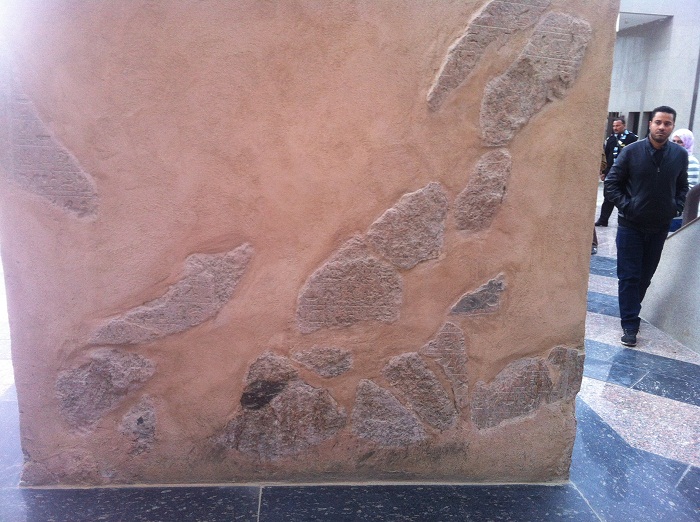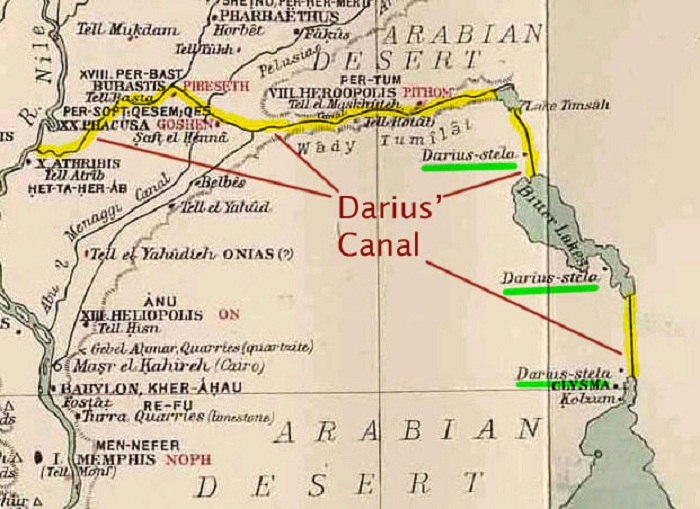
Mile Stones of Ancient Canal, courtesy of Prof. Fathi Saleh
The idea of connecting the Red and the Mediterranean Seas, along with the Nile River, haunted the ancient Egyptians for years.
“Lots of references to the Sesostris Canal were found in the journals of travellers and historians such as Herodotus,” explained professor Fathi Saleh Founder and emeritus director of CULTNAT, as well as Former ambassador of Egypt to UNESCO.
"However, it was Darius the First who succeeded in re-digging the canal and left literal mile stones, around 3 meters high in Suez, Kabrit el Kanal, and Wadi Tolimat," added Saleh

Mile Stone marking Daruis Canal, courtesy of Prof. Fathi Saleh
Back then the Nile River had many branches reaching various governorates and was relatively close to the Red Sea, therefore the idea of connecting all the water sources via one canal was quite appealing.
During the reign of Ptolemy the second, a re-digging of the old canal was issued.
During the Islamic rule of Egypt, in the reign of caliphate Omar Ibn El-Khattab, the Arabian Peninsula was suffering from a famine.
Egypt provided the supplies via a caravan that was so large that the front reached the peninsula while the end was still in Egypt, explained Saleh, "It was after that incident that the Caliphate, aiming to facilitate the recurring supply trips, issued a decree to dig a canal joining the seas with the El-Falougy branch of the Nile in Zagazig governorate. It was functioning within one year and was named Amir El-Momenin Canal."

Map of the Daruis Canal Route, courtesy of Prof. Fathi Saleh
Throughout the centuries, the canals that were dug were always abandoned. They were used for years but, due to the lack of technical maintenance of the canal itself and the desert nature of Egypt, all previous canals were buried deep under years of sand and dust. Still the obsession continued.
During the French expedition of Egypt, one of Napoleon's four main goals was to rediscover the route of the old canals and study the possibility of connecting both seas.
Unfortunately, the French scientists mistakenly believed that both seas have different levels and so any connection would be impossible.
However, during the reign of Mohamed Ali, the same idea was proposed but Mohamed Ali feared that the connection of both seas, and the wealth that it would bring, would attract unwanted foreign powers.
Years later, Ferdinand de Lesseps managed to convince Khedive Said to connect both seas. The plan was implemented and the Suez Canal later opened during the reign of Khedive Ismail.
Short link: